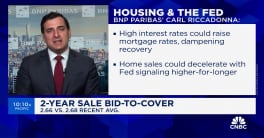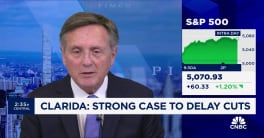The current economic turmoil is comparable to the early 1990s, which can be a valuable guide to understanding what's next as the U.S. economy seeks to rebound into healthy growth, according to one Fed official on Thursday.
Minneapolis Fed President Gary Stern, a voter on the FOMC who is known to tilt towards the hawkish viewpoint, said the experience in the early 1990s would "imply a continuation of only modest expansion in the economy, the likelihood of further increases in unemployment for a time, and a diminution of inflation, absent a resurgence in energy and other commodity prices."
Stern said U.S. consumers have been hit hard by rising energy and commodity prices, but the U.S. economy is fundamentally flexible and resilient, and inflation is expected to moderate in coming months.
"In considering these prospects, it is worth recalling that, despite early challenges, the 1990s turned out to be an excellent decade for the U.S. economy by almost all metrics," he said in Three Forks, Montana.
Stern said there is "considerable uncertainty about the outlook" and the policy environment is "challenging to say the least," but that many of the "initial conditions" prior to the 1990s recession were worse than conditions prior to the subprime meltdown.
"Unemployment, interest rates, and inflation were all lower at the outset of the latest period of turmoil than in the previous headwinds episode," he said. "Equally important, the financial condition of both banking and non-financial businesses was healthier at the onset of recent problems."
On the negative side, Stern said the ongoing housing contraction is worse than in the 1980s or 90s, but with proper regulation and supervisory action, the resilience of the U.S. economy will ultimately prevail.
By Patrick McGee and edited by Megan Ainscow







